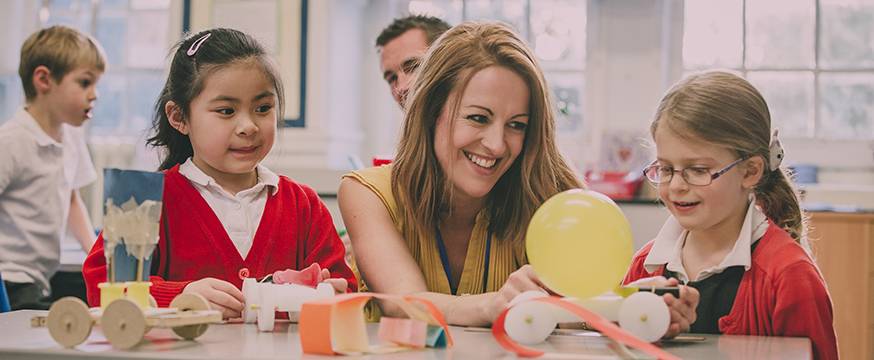
Reversing Australia’s downward spiral in STEM
Research 23 May 2018 4 minute readChanging the curriculum is key to reversing the decline in Australia’s STEM teaching and learning results, says a report by Dr Michael Timms.
Reversing Australia’s downward spiral in STEM
Challenges in STEM Learning in Australian Schools is the latest release in the Policy Insights series from the Australian Council for Educational Research (ACER). It calls for reform in three key areas to help improve the performance of Australian children in science, technology, engineering and mathematics (STEM) subjects. The report recommends:
- an integrated curriculum
- early intervention
- a stronger teaching workforce.
Moving towards an integrated curriculum
Report co-author, ACER Director of Research Development and Quality Assurance Dr Michael Timms, said a shift from the current focus on discrete learning areas to a modern conceptualisation of STEM as interdisciplinary and constantly evolving was essential to maximise the limited space for STEM in the crowded school curriculum.
‘Australia’s unbalanced and fragmented STEM curriculum is leading to declining interest among students,’ Dr Timms said. ‘An integrated approach that focuses on practices, skills and capabilities, and not just disciplinary knowledge, will create a relevant context in which content can be learned.’
Early intervention in STEM learning
Research shows that science achievement gaps begin very early in life. Dr Timms says that equitable and early access to STEM is therefore vital and should not depend on a student’s capacity to pay for education in this area.
‘STEM learning is so often packaged as extracurricular activities with inherent barriers to access for less privileged learners,’ Dr Timms said. ‘We must invest in creating the same level of engagement and excitement about STEM as part of the standard program in all early childhood centres and schools.’
The Australian Government’s Early Learning STEM Australia (ELSA) project is developing play-based STEM programs for preschool children, and recommends establishing a greater number of specialised STEM schools, such as the STEM career academy – or the ‘school-within-a-school’ model – for older students.
Building a stronger teaching workforce
The report notes a worrying lack of expertise and qualifications in STEM areas in Australia’s teaching workforce, with only a quarter of primary school teachers possessing a strong background or a university degree in science or mathematics. At the secondary level, the relatively small number of STEM specialists tend to teach senior students, leaving students in Years 7–10 to be taught by out-of-field teachers.
‘We do not currently have the supply of qualified teachers we need to improve STEM learning,’ Dr Timms said. ‘Incentives to attract people to STEM teaching are one way to address this, but we need better data to understand where in the teacher supply pipeline we might best target such policies, and to gauge the extent to which those policies are working.’
Find out more:
Read the full report, Challenges in STEM Learning in Australian Schools, Policy Insights 7, by Dr Michael Timms, Professor Kathryn Moyle, Dr Paul Weldon and Pru Mitchell, and published by ACER, at http://research.acer.edu.au/policyinsights/7.